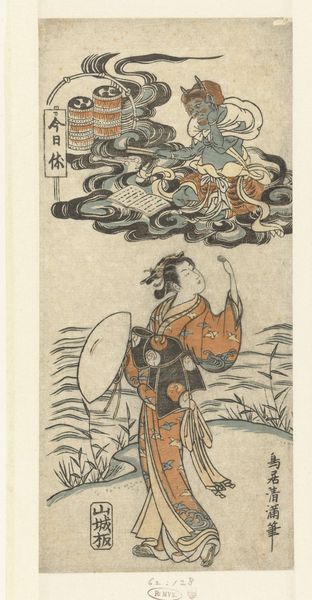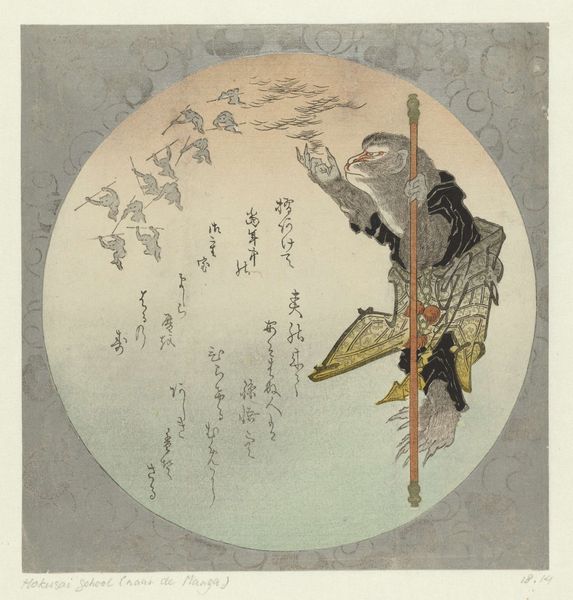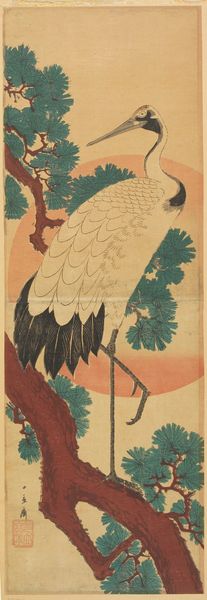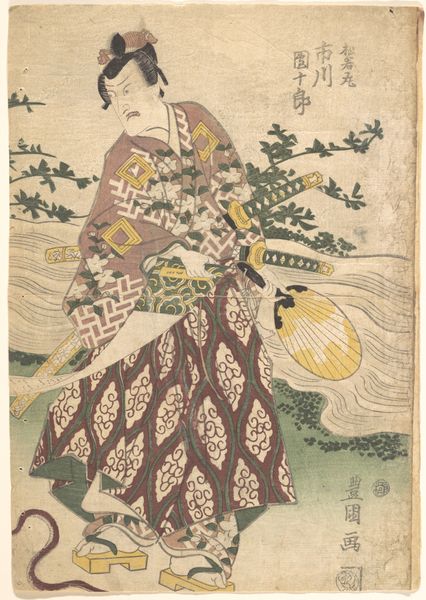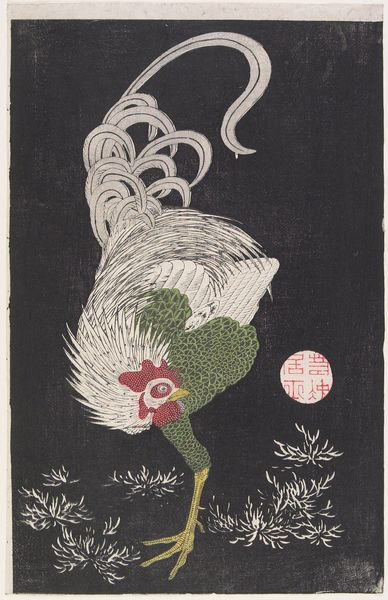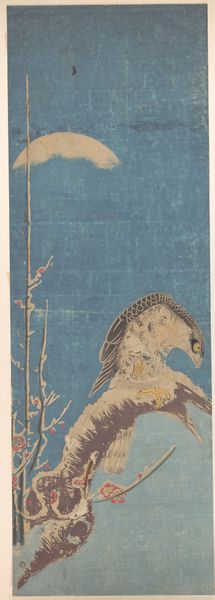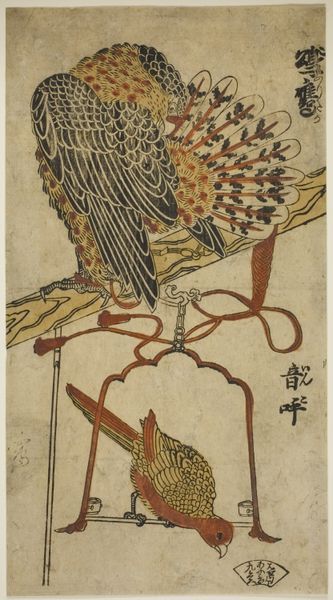
print, woodblock-print
# print
#
asian-art
#
landscape
#
ukiyo-e
#
figuration
#
woodblock-print
#
orientalism
Dimensions: 28 1/2 x 4 3/5 in. (72.4 x 11.7 cm)
Copyright: Public Domain
Editor: This beautiful Japanese woodblock print, "Phoenix Flying Over a Paulownia Tree," by Isoda Koryūsai, dates from around 1760-1780. I’m immediately drawn to the delicate lines and how they give such detail, almost as if it's been painted, rather than printed. What's your perspective on it? Curator: Well, let's think about what it means to *print* this image, rather than paint it. Consider the networks of artisans involved in producing ukiyo-e prints: the artist, the block carver, the printer, the publisher. This division of labor shapes the final product. It isn't just a single genius behind it. This challenges ideas of individual artistic genius, wouldn't you say? Editor: I suppose that makes sense. It's interesting to think about how many hands contributed to it. Do the materials also give insight? Curator: Absolutely. Look at the paper; the inks, likely made from minerals or plants; the woodblocks themselves, usually cherry. These aren't passive carriers of the image, they define the limitations of color, the texture, the overall feel of the artwork. We see evidence of the choices made based on the availability of certain materials and skills within the artist’s economic range. How do you think these processes influenced the work itself? Editor: Now that you mention it, I notice how much the texture of the paper matters. It's so simple but beautiful, a core material of the print and culture. Curator: Exactly! And this production, by its very nature, allowed for the mass consumption of art. It wasn't just for the elite, and that democratization surely changed how people engaged with imagery. A print for many versus an oil painting for a few...what is the cultural value in this mass dissemination? Editor: It completely changes its impact and how it’s seen and valued. Curator: It shifts the power dynamics surrounding art. Examining it through its means of production illuminates these shifts in power and perception. Thanks to it, I will look closer into how art gets fabricated.
Comments
No comments
Be the first to comment and join the conversation on the ultimate creative platform.
